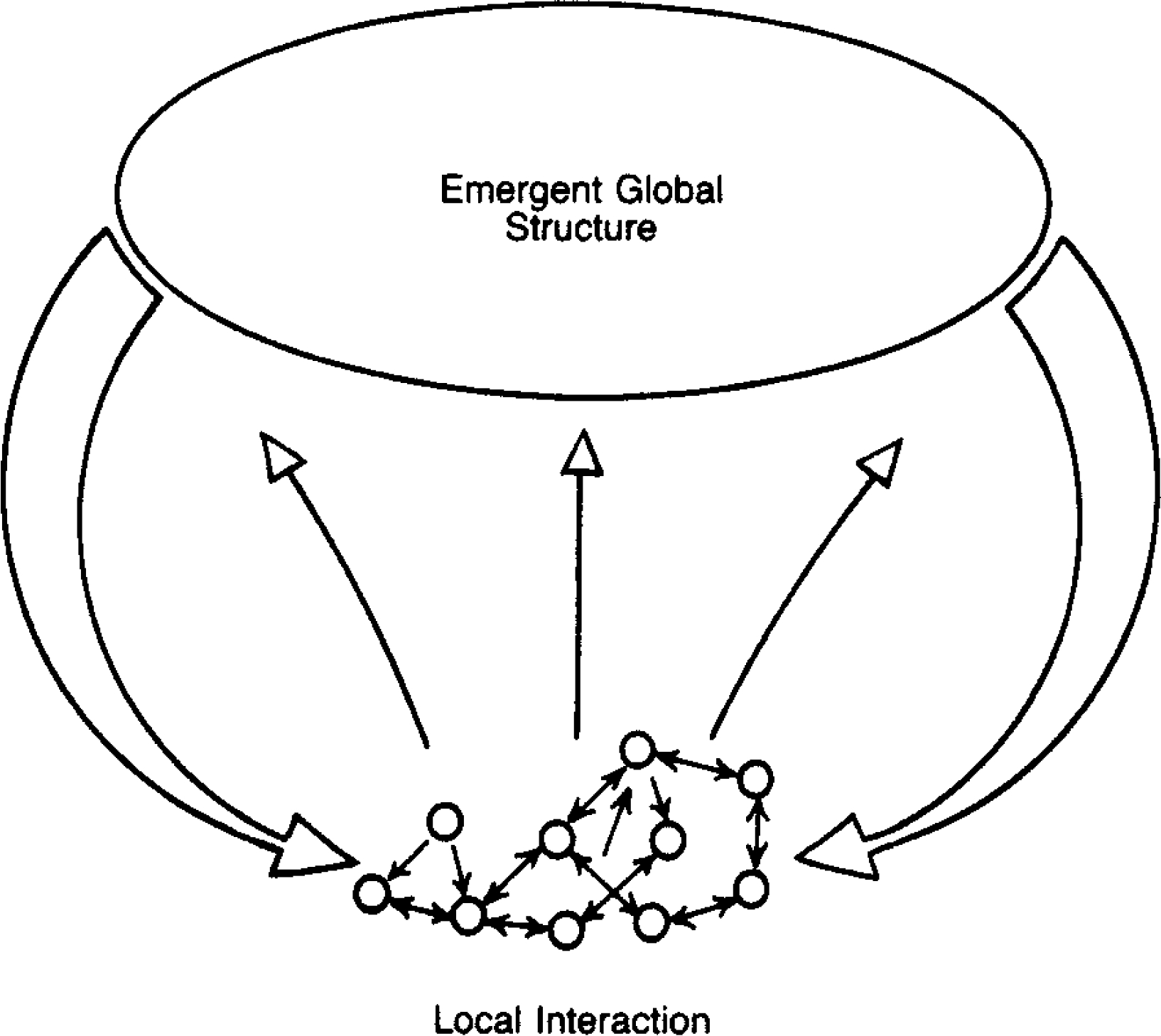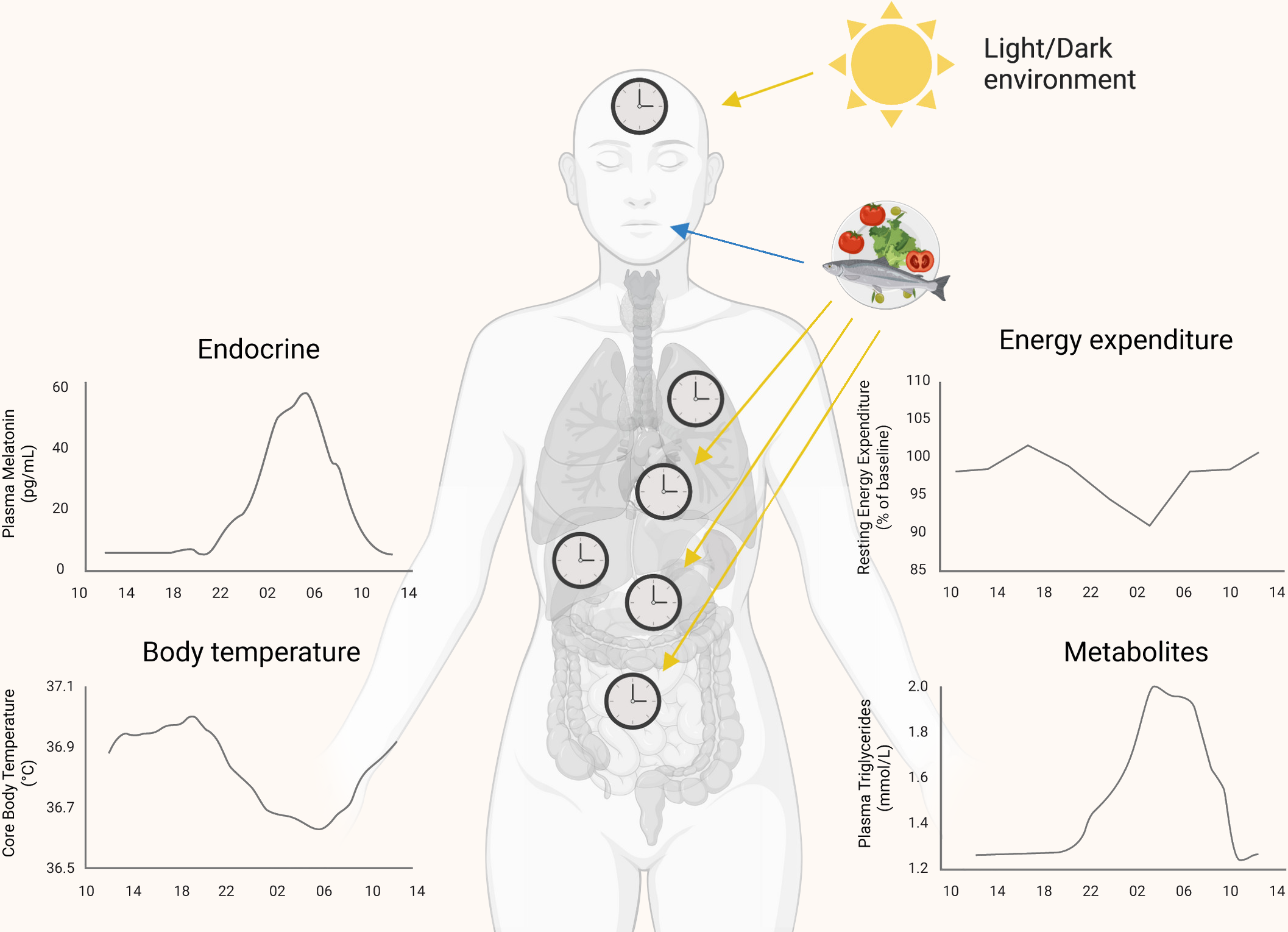3 On Complexity Science
Complexity science is the science dedicated to understanding emergent phenomena (Krakauer & Wolpert, 2024). Like computer science and chronobiology, it began to take shape in the second half of the 20th century1, by the convergence of several fields, such as systems theory, game theory, and nonlinear dynamics (Sayama, 2015).
At a fundamental level, emergence can be defined as stable macroscopic patterns arising from local interactions (Epstein, 1999). These patterns emerge from the collective actions of a system’s parts, which cannot be attained by simply summing them up (Holland, 2014). They may give rise to new properties in a system, which can only be studied by observing the interactions within it (Figure 3.1).

Source: Reproduced from Lewin (1993, Figure 1).
Systems that exhibit emergent properties are considered complex systems (Holland, 2014; Mitchell, 2009). In a general sense, a system can be defined as a set of interacting parts that, through their interactions, produce a global behavior (von Bertalanffy, 1968). While both complicated and complex systems consist of many interacting parts, the defining characteristic of complex systems is that they cannot be fully understood by analyzing their components in isolation (Holland, 1992). This distinction poses significant challenges, as traditional methods for studying systems are often inadequate for capturing the intricate dynamics of complex systems (Holland, 2006).
Biological rhythms are an example of emergent properties produced by a complex system with multiple levels of interaction (Partch et al., 2014). Molecular oscillations are generated at the cellular level (Buhr & Takahashi, 2013; Merrow et al., 2005). These oscillations interact and couple with one another, forming a complex circadian network that coordinates rhythmic physiology and behavior (Foster, 2020; Raj & van Oudenaarden, 2008). Although science has not fully mapped all the pathways, it is understood that in this kaleidoscopic array of simultaneous interactions, a global rhythm emerges. Each rhythm, or clock, is itself an emergent phenomenon, interacting with others to produce a global behavior (Figure 3.2). As the parts generate these emergences, the emergent feedback to the parts, regulating and modulating functions at all levels (Roenneberg et al., 2007).

Source: Reproduced from Flanagan et al. (2021, Figure 2).
The entrainment of these rhythms with environmental periodicities can involve different mechanisms. For the light/dark cycle, the main zeitgeber, this involves a network of photosensitive retinal ganglion cells (pRGCs) that send signals to the suprachiasmatic nucleus (SCN) in the hypothalamus (Brainard et al., 2001; Thapan et al., 2001). The SCN then sends signals to the pineal gland, which produces melatonin, a hormone that regulates sleep-wake cycles, among other functions (Foster, 2021).
To model this phenomenon, one must understand how complex systems behave and can be studied. This thesis adopts a global approach to understanding the effect of light/dark cycle entrainment on circadian expressions of populations, considering potential interactions for proper system control. Given the thesis’s aim to test the latitude hypothesis, a global approach is appropriate. Alternatively, a local approach could explore entrainment in populations by modeling individuals, each with their own circadian clock, and their interactions with the environment.
Brian Castellani & Lasse Gerrits created a visual map to illustrate the different fields and components of complexity science. You can find it at: https://www.art-sciencefactory.com/complexity-map_feb09.html↩︎